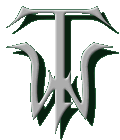|
The Eagles
In the published Silmarillion the first mentioning of eagles happens in the very first chapter of the "Quenta Silmarillion":
| But Manwë Súlimo, highest and holiest of the Valar, sat upon the borders of Aman, forsaking not in his thought the Outer Lands. For his throne was set in majesty upon the pinnacle of Taniquetil, the highest of the mountains of the world, standing upon the margin of the sea. Spirits in the shape of hawks and eagles flew ever to and from his halls; and their eyes could see to the depths of the seas, and pierce the hidden caverns beneath the world. Thus they brought word to him of well nigh all that passed in Arda; yet some things were hidden even from the eyes of Manwë and the servants of Manwë, for where Melkor sat in his dark thought impenetrable shadows lay. | | The Silmarillion - "Of the Beginning of Days" |
|
This is a remnant of a similar passage in "The Coming of the Valar" in BoLT1 (from around 1916-18), both of which which strongly resemble the Germanic Edda(s) with Odin in his high-seat Hlidskjálf looking out over the whole world and his two ravens Hugin(n) thought and Munin(n) memory which fly out each day at dawn and return at dinnertime and speak news from all over the world into his ear.
The first connection with spirits is made in the next chapter:
| And Manwë said: 'O Kementári, Eru hath spoken, saying: "Do then any of the Valar suppose that I did not hear all the Song, even the least sound of the least voice? Behold! When the Children awake, then the thought of Yavanna will awake also, and it will summon spirits from afar, and they will go among the kelvar and the olvar, and some will dwell therein, and be held in reverence, and their just anger shall be feared. For a time: while the Firstborn are in their power, and while the Secondborn are young." But dost them not now remember, Kementári, that thy thought sang not always alone? Did not thy thought and mine meet also, so that we took wing together like great birds that soar above the clouds? That also shall come to be by the heed of Ilúvatar, and before the Children awake there shall go forth with wings like the wind the Eagles of the Lords of the West.' | | The Silmarillion - "Of Aulë and Yavanna" |
|
While the first quoted passage generates in Tolkiens earliest writings, this text above was written some 4 decades later (1958-9) and titled "Anaxartamel" (in the draft) and "Anaxartaron Onyalië" and "Of the Ents and the Eagles" (in 2 typescripts).
In the "Annals of Aman" (written also around 1958) a note to §169 contains an interesting sentence:
And in "Myths Transformed" - in the essay about "Orcs" - there follows some further explanation about a connection between Maiar and some eagles:
| Only the Valar and Maiar are intelligences that can assume forms of Arda at will. Huan and Sorontar could be Maiar - emissaries of Manwe. But unfortunately in The Lord of the Rings Gwaehir and Landroval are said to be descendants of Sorontar. | | Morgoths Ring - "Myths Transformed" |
|
and even more explicit in an probably unconnected note (but mentioned by Christopher Tolkien in the context of the passage above):
| Living things in Aman. As the Valar would robe themselves like the Children, many of the Maiar robed themselves like other lesser living things, as trees, flowers, beasts. (Huan.) | | ibid. |
|
tbc...
ChW
FolderEssays
|



